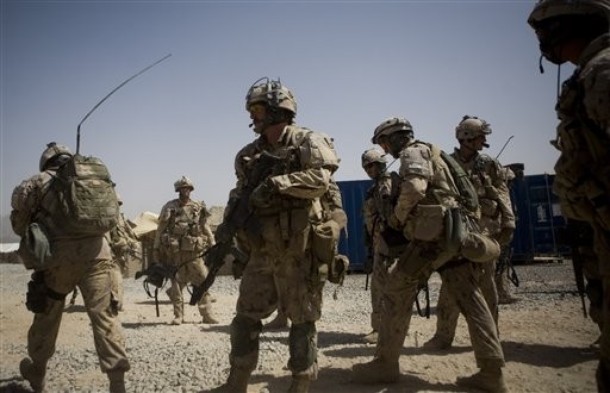
Rod Nordland details American efforts to nation build in Kandahar, Afghanistan:
Minister of Defense Abdul Rahim Wardak said the new approach was adopted after officials considered the mistakes made in Marja and the much larger scale of Kandahar.â??We have learned lessons, also, which we will apply in the future,â? he said in an interview this week. â??About Kandahar, it is a different type operation, it is not like Marja, it is not going to be that kinetic.â? (Kinetic is military jargon to describe fighting.)
Instead, the emphasis has been placed on strengthening provincial reconstruction teams, once run by Canadians, with American employees â?? from the embassy, the Agency for International Development and the Department of Agriculture â?? in six crucial districts around Kandahar.
The Kandahar civilian operation increased to 110 Americans from 8 last year, with 50 more on their way this summer, United States officials say. They are providing subsidized seeds and tools, carrying out cash-for-work programs and even hiring employees for Afghan government offices here....
A key to being able to do that is the steady increase of troops from the United States and other NATO nations for protection.
Until 2009, a Canadian battle group of 1,300 troops was responsible for all of Kandahar and could do little more than keep the Taliban from taking the city â?? while leaving the insurgents free to operate in the surrounding districts. Canadian civilians working on provincial reconstruction rarely left their base.
Since last year, the United States Army has brought in the Second Stryker Brigade, a battalion of the 82nd Airborne, parts of the Fourth Infantry Division and a cavalry squadron, for the crucial outlying districts, as well as a military police battalion in the city of Kandahar itself.
â??The military presence bought us the political space and oxygen this fall to start putting projects in to remedy grievances in the districts and more recently in the city itself,â? said an American official, speaking on the condition of anonymity in line with United States Embassy policy.
What is going to happen to this when the administration starts drawing down troops in 2011? At the time the Afghan strategy was announced, I was on the fence about the virtues of a withdrawal timeline, but it increasingly looks untenable. If you're going to commit to nation building and using tens of thousands of American troops to protect Afghan civilians while you jump-start reconstruction, then time-stamping an arbitrary withdrawal is counter-productive. It would be better, in my view, not to commit to nation building as a counter-terrorism strategy, but the administration seems to have fixed on the worst of both worlds: it won't effectively nation build but will nonetheless risk American and NATO lives and siphon American taxpayer dollars into an effort it has already disavowed.
(AP Photo)











